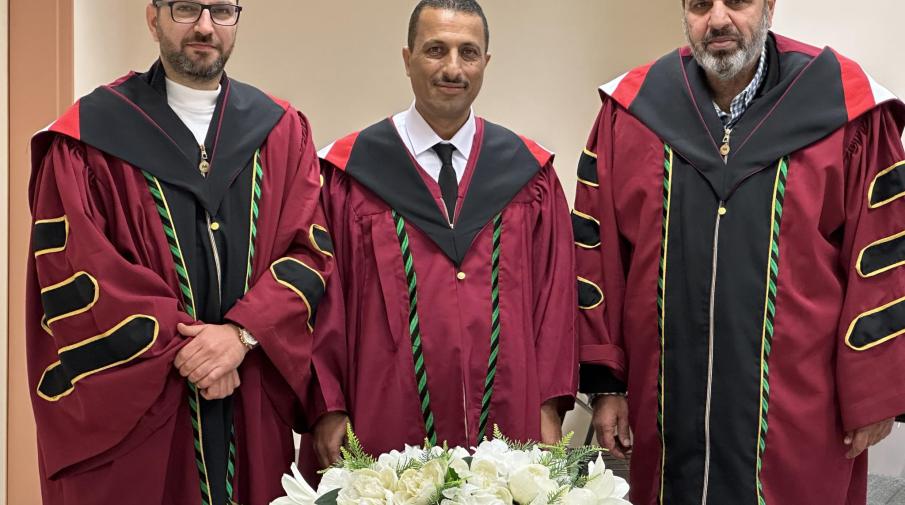Researcher Mohammad AbdalGhani, a student in the master’s program in computed tomography and MRI sciences, defended his thesis titled: “Magnetic Resonance Evaluation of Vestibulocochlear Nerve Diseases Diagnosed by Videonystagmus and Audiograms.”
The research aims to study the role of MRI in diagnosing vestibular and auditory disorders, and to compare MRI with a positive vestibular and auditory function test. In addition, the research aims at determining the image quality of the MRI sequences used by assessing the image quality, including the signal-to-noise ratio and contrast-to-noise ratio as well as drawing a comparison between the different sequences.
The researcher employed the descriptive analytical method on a sample that included 49 male and female patients aged between 7 and 77 years. 32 patients with a positive vestibular function test were selected. Then, the researcher conducted image quality assessment and analyzed the results using the statistical analysis SPSS and the ImageJ programs to measure signal strength and noise.
The importance of the research lies in the fact that it highlights the role of magnetic resonance imaging in detecting diseases of the vestibulocochlear nerve, revealing the optimal method of diagnosis in order to save time and effort for the patient, in addition to testing the quality standards of magnetic resonance images. This allows organizing a unified and effective imaging protocol for diagnosing diseases related to the eighth nerve.
The study concluded that the eighth nerve measurement is thicker in patients with positive MRI results. Moreover, MRI is the preferred examination for identifying vestibular nerve disorders, and that sequences with high signal-to-noise ratio and contrast-to-noise ratio have high quality and excellent diagnostic capabilities. Videonystagmus remains a crucial instrument in detecting and diagnosing patients. The values of the quality measurements in the study can be adopted as a reference for the ideal quality in MRI protocols for imaging the eighth nerve.
The thesis was supervised by Dr. Samer Muhanna. The committee of examiners included: Dr. Hussein Al Masri and Dr. Abdalnasser Assi.

